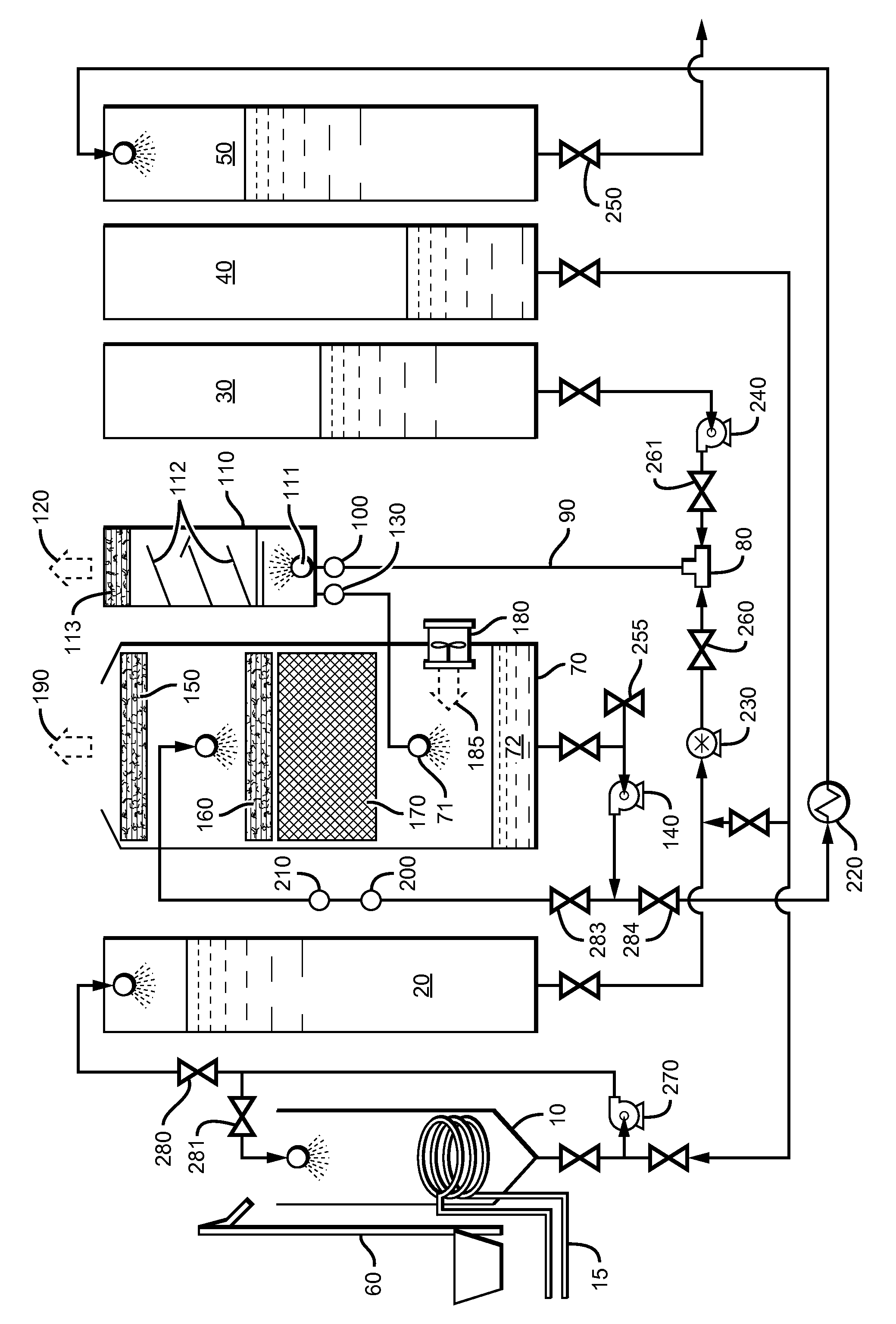Acid combination one step reaction process for agricultural use products and associated methods
a technology of potassium polyphosphate and reaction process, which is applied in the field of process for the manufacture of potassium polyphosphate potassium polyphosphite polymeric compounds, can solve the problems of slow and unproductive process, low yield, and low yield, and achieve stable composition, less foliage burn, and high analysis
- Summary
- Abstract
- Description
- Claims
- Application Information
AI Technical Summary
Benefits of technology
Problems solved by technology
Method used
Image
Examples
example 1
[0090]Referring to FIG. 1, first a measured amount of 85% phosphoric acid was pumped from tank 40 via pump 270 into blend tank 10. Next, solid dry 99% phosphorous acid was transported to blend tank 10 and lifted into blend tank 10 via elevator 60 and blended, agitated and mixed with pump 270 with the 85% phosphoric acid and dissolved therein. A continuous feed ratio of 1:3 by weight of phosphorous acid to phosphoric acid was maintained during the process. The resulting DPA solution was then preheated by an external source of steam through heating coil 15, from ambient temperature to about 82° C. in order to obtain a higher heat of reaction temperature in reactor tee 80. To begin the test, a 3,000 gallon per hour production rate was established which would require a 29 GPM per minute flow rate of KOH and 21 GPM flow rate of phosphoric acid when production was fully up to specification. A “resident”300 gallon starter heel of finished product was left in the reactor vessel from the pre...
example 2
[0092]Example 2 was procedurally similar to Example 1, including a run temperature of about 170° C. in tee 80, except that the specific gravity was lowered and closely monitored and maintained at 1.48 by continuously adding free water to evaporative cooling tank 70 via injection port valve 255 on the suction side of cooling, recirculation and product deliver pump 140. Sampling procedure and handling were also similar to Example 1, and the results are listed below as Sample #2, in table 1-1, which showed less polymerization because of the added free water and lower specific gravity in the reaction process than the results from Example 1.
example 3
[0093]Example 3 was procedurally similar to Example 2. The run temperature was about 174° C. in tee 80. The specific gravity was lowered still more and closely monitored and maintained at 1.47 by continuously adding free water to evaporative cooling tank 70 via injection port valve 255 on the suction side of cooling, recirculation and product deliver pump 140. Sampling procedure and handling were also similar to example 2, and the results are listed below as Sample #3, in Table 1-1, which showed even less polymerization because of the added free water and lower specific gravity in the reaction process than the results from example 2.
PUM
 Login to View More
Login to View More Abstract
Description
Claims
Application Information
 Login to View More
Login to View More - R&D
- Intellectual Property
- Life Sciences
- Materials
- Tech Scout
- Unparalleled Data Quality
- Higher Quality Content
- 60% Fewer Hallucinations
Browse by: Latest US Patents, China's latest patents, Technical Efficacy Thesaurus, Application Domain, Technology Topic, Popular Technical Reports.
© 2025 PatSnap. All rights reserved.Legal|Privacy policy|Modern Slavery Act Transparency Statement|Sitemap|About US| Contact US: help@patsnap.com


